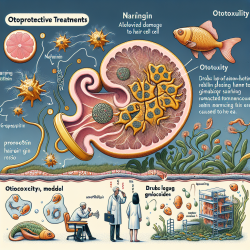Introduction
As a practitioner working with students who have special needs, understanding the intricacies of neurological disorders is essential. One such disorder, cerebellar ataxia, is characterized by impaired coordination and balance due to dysfunction in the cerebellum. Recent research has highlighted the potential of targeting ion channels and Purkinje neuron intrinsic membrane excitability as a therapeutic strategy for cerebellar ataxia.
The Role of Ion Channels
Ion channels are integral to the functioning of neurons, including Purkinje neurons in the cerebellum. These channels regulate the flow of ions across the neuronal membrane, influencing the excitability and firing patterns of neurons. In cerebellar ataxia, dysregulation of ion channels can lead to impaired motor coordination.
Research Insights
The research article "Targeting Ion Channels and Purkinje Neuron Intrinsic Membrane Excitability as a Therapeutic Strategy for Cerebellar Ataxia" suggests that perturbations in ion channel function are a common mechanism driving motor impairment in cerebellar ataxias. By restoring normal ion channel function, it may be possible to improve motor performance in affected individuals.
Implementing Research Outcomes
Practitioners can leverage these insights to enhance therapeutic interventions for students with cerebellar ataxia. Consider the following strategies:
- Therapeutic Exercises: Incorporate exercises that promote coordination and balance, potentially enhancing the efficacy of ion channel-targeted therapies.
- Collaborative Research: Engage in research collaborations to explore new therapies targeting ion channels, contributing to the development of more effective treatments.
- Continuous Education: Stay informed about the latest advancements in ion channel research through conferences and webinars, ensuring that therapeutic approaches remain cutting-edge.
Encouraging Further Research
While current findings are promising, further research is needed to fully understand the therapeutic potential of ion channels in cerebellar ataxia. Practitioners are encouraged to contribute to this body of research, exploring new avenues for intervention and therapy.
Conclusion
Targeting ion channels offers a promising avenue for improving motor function in individuals with cerebellar ataxia. By staying informed and actively participating in research, practitioners can play a pivotal role in advancing therapeutic strategies and enhancing the quality of life for affected students.
To read the original research paper, please follow this link: Targeting Ion Channels and Purkinje Neuron Intrinsic Membrane Excitability as a Therapeutic Strategy for Cerebellar Ataxia










